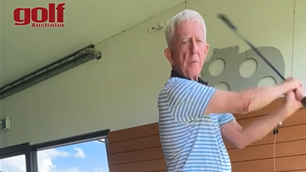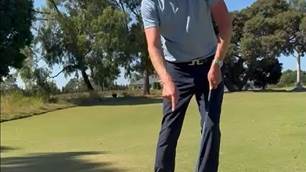This collection of drills from Adrian Fryer will rid this frustrating tendency from your game for good.
 TEXT & IMAGEs: © BAUER CONSUMER MEDIA LIMITED
TEXT & IMAGEs: © BAUER CONSUMER MEDIA LIMITEDLAG PUTTING: Assess the hole side
On long putts, getting the pace right should always take priority over the line. Get the speed correct and your ball shouldn’t finish too far away from tap-in range. But it doesn’t hurt to try to get both pace and line as accurate as possible ... and hole the putt.
Ultimately that is still your goal. By narrowing your focus in this way, instead of aiming for the ‘rubbish bin’ lid, your margin for error immediately increases. If you were to break the putt into three segments, the final third nearer the hole is where the slopes affect the ball’s journey the most, so make this your priority when assessing them, always from the low side.
1. If you won’t affect the pace of play, it’s always a good idea to look at your putt from behind the hole. The last few feet of your putt is where gravity will affect the roll of the ball most because it’s losing speed. So pay close attention to slopes on the green around the hole and take this into account when selecting your start line.
2. After you’ve read your putt from behind the hole, stand between your ball and the hole six feet from the hole’s location and make some practice strokes, visualising the path the ball will take in those last few feet. Remember not to ground the putter when doing this as you will be penalised two shots!
 Shaft and belly united
Shaft and belly united
One way to illustrate the required pendulum motion of the putter and the relationship between the butt of the putter and the
belly button is to place a tee in the butt of the handle. The goal is for the tee to point at the belly button at every point during
the stroke.
Golfers often fail to let the putter swing by trying to keep the face square to the target for longer with the elbow and the handle moving forward with the clubhead. This makes the arms detach from the body, creating inconsistency of strike and distance control. It also causes the putter to rise up through impact excessively, increasing the chance of topping the ball.
Related Articles

Video Lesson: Hear the swoosh past the ball

Playing From The Tips Ep.106: Texas Open, LIV Miami & LPGA Match Play












